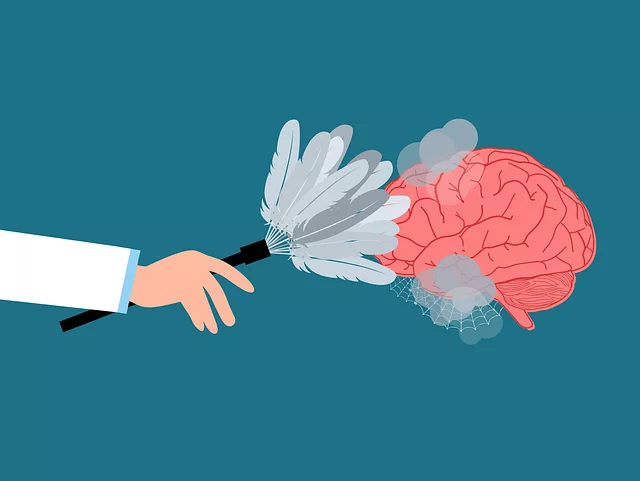Kaiser's Broomfield facility emphasizes inner strength development in risk management, combining comprehensive assessments, supervision, and support systems for patient safety and emotional healing. Their inpatient model incorporates evidence-based practices like emotional regulation, stigma reduction, and stress workshops. Through structured environments, continuous training emphasizing compassion cultivation, and proactive tools like journaling and podcasts, Kaiser ensures a holistic, supportive approach to mental health care in Broomfield, setting a standard for effective risk management in inpatient settings.
Mental health professionals face unique challenges, demanding robust risk management planning. This article delves into the intricacies of effective risk assessment and mitigation strategies within the context of mental healthcare. We explore the Kaiser Inpatient Model as a case study, demonstrating a successful approach to managing patient risks. Additionally, we discuss implementing evidence-based assessment tools and the importance of continuous improvement driven by staff support. Understanding these key components is essential for creating safe, effective treatment environments, especially considering facilities like Kaiser’s Broomfield inpatient unit.
- Understanding Risk Management in Mental Health Care
- The Kaiser Inpatient Model: A Case Study
- Implementing Effective Risk Assessment Strategies
- Continuous Improvement and Staff Support for Risk Management
Understanding Risk Management in Mental Health Care

Mental health professionals are tasked with helping individuals navigate complex emotional landscapes and often find themselves at the forefront of risk management. Understanding risk in this context goes beyond identifying potential hazards; it involves recognizing and mitigating the unique challenges that arise within the therapeutic environment. Effective risk management for mental health care encompasses a comprehensive approach, including thorough Risk Assessment for Mental Health Professionals, ongoing supervision, and robust support systems.
At institutions like Kaiser’s inpatient mental health facility in Broomfield, fostering an environment that prioritizes Inner Strength Development is paramount. This involves not only ensuring the safety of patients but also empowering them through evidence-based practices and therapeutic interventions. By integrating emotional healing processes into risk management planning, professionals can create a nurturing space where individuals can safely explore their mental health concerns and embark on journeys towards resilience and recovery.
The Kaiser Inpatient Model: A Case Study

The Kaiser Inpatient Model, with its focus on comprehensive mental health care, serves as a compelling case study for risk management planning among professionals in this field. Located in Broomfield, Kaiser’s inpatient facility offers a structured environment where patients receive intensive treatment for various mental illnesses. This model demonstrates an organized approach to managing risks associated with acute psychiatric conditions, ensuring patient safety and well-being.
By implementing evidence-based practices, such as Emotional Regulation techniques and Mental Illness Stigma Reduction Efforts, Kaiser has created a supportive atmosphere. Additionally, their Stress Management Workshops, organized by the organization itself, empower patients with coping mechanisms, fostering resilience. This holistic strategy not only enhances recovery but also reduces potential risks, making it an excellent reference for healthcare providers aiming to improve risk management planning in inpatient mental health settings.
Implementing Effective Risk Assessment Strategies

Effective risk assessment is a cornerstone for mental health professionals, especially those managing client care in diverse settings, such as the inpatient units at Kaiser in Broomfield. It involves meticulously evaluating and understanding potential risks to ensure the safety and well-being of both clients and staff. By implementing robust strategies, professionals can anticipate and mitigate risks proactively. This process includes comprehensive patient assessments, considering historical data, current behavioral patterns, and environmental factors unique to each client.
One valuable tool is conflict resolution techniques, which not only help manage potential disputes among patients but also provide insights into underlying risk factors. Additionally, encouraging clients to engage in mental wellness journaling exercises can offer a safe space for them to express their thoughts and emotions, facilitating self-awareness and early identification of distress signals. The production of a Mental Wellness Podcast Series could also be a creative way to reach out to a wider audience, offering guidance on various aspects of mental health management, including risk assessment and coping strategies.
Continuous Improvement and Staff Support for Risk Management

Mental health professionals must embrace continuous improvement as an integral part of risk management planning. This involves regularly reviewing and updating policies, procedures, and protocols to ensure they remain effective and relevant in addressing emerging risks. Encouraging a culture of open dialogue and feedback among staff can help identify areas for enhancement, fostering an environment where learning from incidents and near-misses is seen as valuable rather than punitive.
At Kaiser’s inpatient mental health facility in Broomfield, this commitment to improvement is evident through the integration of Compassion Cultivation Practices into staff training programs. These practices not only enhance self-care but also improve patient outcomes by cultivating empathy, mindfulness, and resilience among care providers. Additionally, Public Awareness Campaigns Development plays a crucial role in educating the community about mental health issues, reducing stigma, and encouraging individuals to seek support. Trauma Support Services are another vital component, ensuring that staff are equipped to handle trauma-informed care, thereby creating safer and more supportive environments for both patients and professionals.
Risk management planning is an indispensable component of quality care in mental health professionals. By adopting strategies like the Kaiser Inpatient Model, which has proven effective in managing risks in Broomfield’s inpatient mental health facilities, healthcare providers can ensure a safer environment for patients and staff alike. Continuous improvement, coupled with comprehensive staff support, is key to enhancing risk assessment and mitigation techniques. This not only improves patient outcomes but also fosters a resilient and supportive work environment for mental health professionals.






